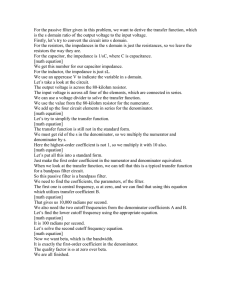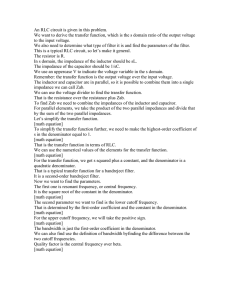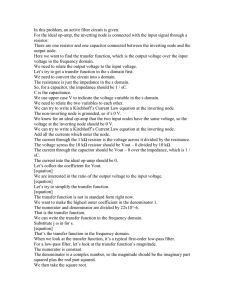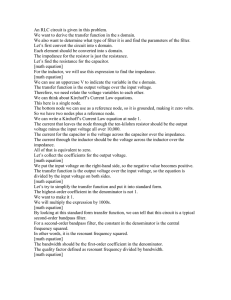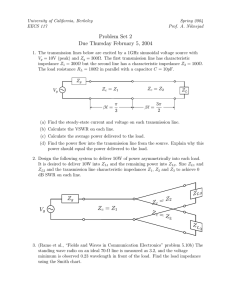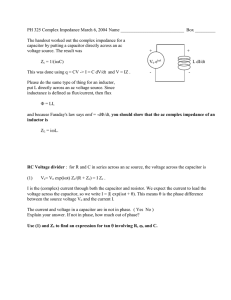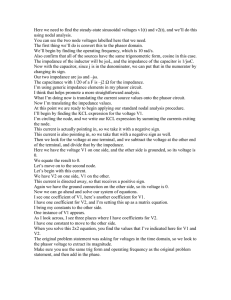The circuit in this problem has one ideal op amp,... We are interested in the transfer function in frequency domain.
advertisement
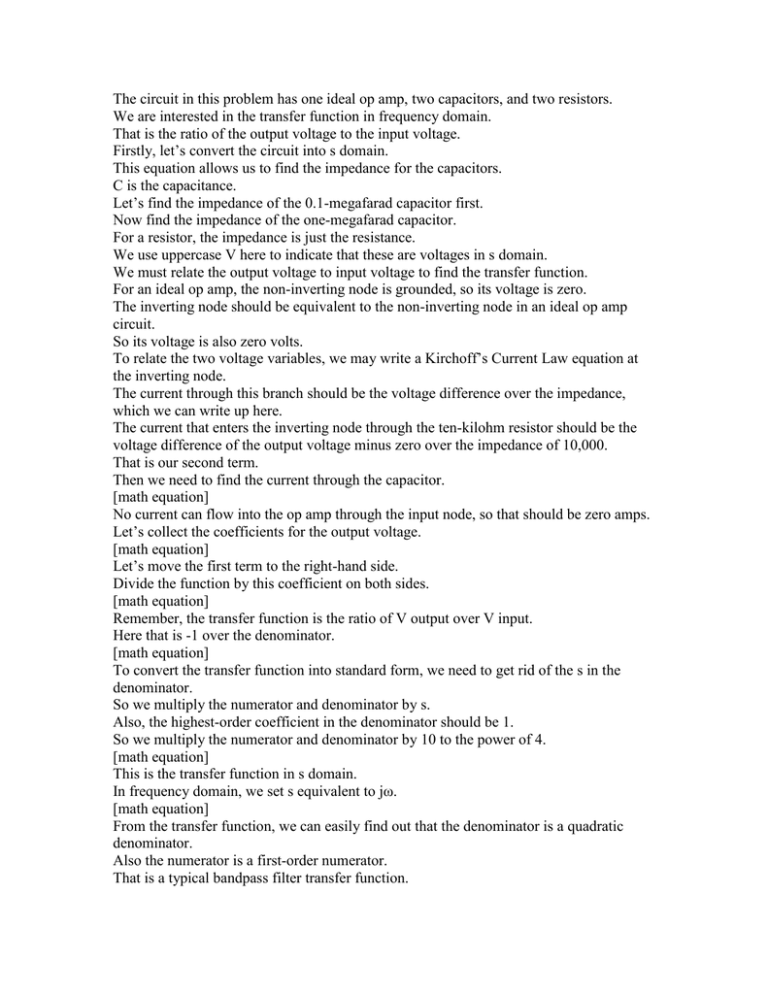
The circuit in this problem has one ideal op amp, two capacitors, and two resistors. We are interested in the transfer function in frequency domain. That is the ratio of the output voltage to the input voltage. Firstly, let’s convert the circuit into s domain. This equation allows us to find the impedance for the capacitors. C is the capacitance. Let’s find the impedance of the 0.1-megafarad capacitor first. Now find the impedance of the one-megafarad capacitor. For a resistor, the impedance is just the resistance. We use uppercase V here to indicate that these are voltages in s domain. We must relate the output voltage to input voltage to find the transfer function. For an ideal op amp, the non-inverting node is grounded, so its voltage is zero. The inverting node should be equivalent to the non-inverting node in an ideal op amp circuit. So its voltage is also zero volts. To relate the two voltage variables, we may write a Kirchoff’s Current Law equation at the inverting node. The current through this branch should be the voltage difference over the impedance, which we can write up here. The current that enters the inverting node through the ten-kilohm resistor should be the voltage difference of the output voltage minus zero over the impedance of 10,000. That is our second term. Then we need to find the current through the capacitor. [math equation] No current can flow into the op amp through the input node, so that should be zero amps. Let’s collect the coefficients for the output voltage. [math equation] Let’s move the first term to the right-hand side. Divide the function by this coefficient on both sides. [math equation] Remember, the transfer function is the ratio of V output over V input. Here that is -1 over the denominator. [math equation] To convert the transfer function into standard form, we need to get rid of the s in the denominator. So we multiply the numerator and denominator by s. Also, the highest-order coefficient in the denominator should be 1. So we multiply the numerator and denominator by 10 to the power of 4. [math equation] This is the transfer function in s domain. In frequency domain, we set s equivalent to jω. [math equation] From the transfer function, we can easily find out that the denominator is a quadratic denominator. Also the numerator is a first-order numerator. That is a typical bandpass filter transfer function. So we have found the transfer function in frequency domain, and this is a bandpass filter.
